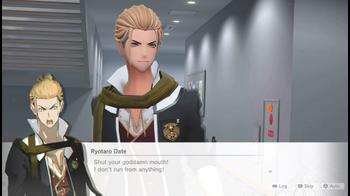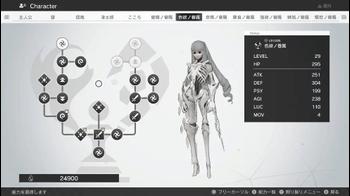
Monark Review
Writers note: Before diving into the review proper, I felt it was important to make potential players aware, Monark contains many, and I mean MANY unsettling themes and situations that may be a trigger to some. These include clear depictions of individuals committing suicide on screen, severe bullying, mentions of incestuous behavior, and stalkers, among others.
Sometimes you will play a game and come away surprised by how much better it was than you expected it to be, and sometimes it’s the exact opposite.
Unfortunately, Monark falls into the latter category. I went into the game looking for a promising start to a new RPG franchise. Instead, what I got was a repetitive & drab title that poorly explained its world, though with a pretty fun tactical combat system.
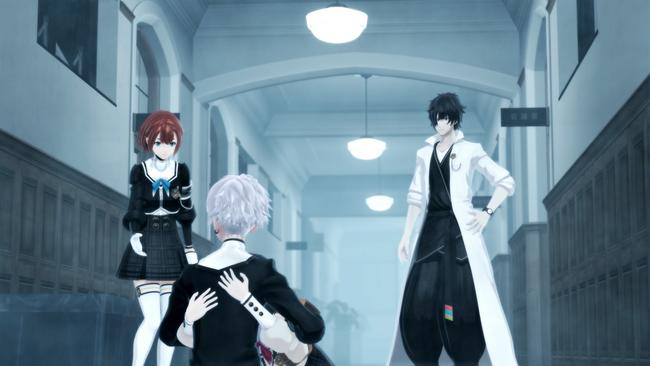
As an amnesiac high-school student, you wake up finding yourself trapped on the school grounds of Shin Mikado Academy. You quickly discover that the school is plagued with a mysterious Mist that is driving students and faculty insane. There have been killings and other odd occurrences happening, and you can’t leave due to a barrier that has barred the academy from the outside world.
With the help of Monark’s mascot character, a strange rhyming rabbit daemon named Vanitas, you become the Pactbearer of Vanity and work to save the school along with other Pactbearers you meet along the way. By taking advantage of the power EGO and your soul’s manifested Imagigear (I still can’t take this term seriously) equipment, you will venture into the otherworld filled with daemons in order to destroy the evil Pactbearer’s Ideals (big crystals), and stop the mist. As the Vice President of the ‘True Student Council’, you will be helped by a team of the school’s faculty and a few students to complete your mission.
For the characters that you are able to buddy up with, it felt like developer Lancarse reached into the “stereotypical anime archetypes” bag and pulled out what they grabbed. You have your snarky bad-boy (that secretly has a good side) with Ryotaro, the socially awkward bookworm introvert Kokoro, the always serious self-deprecating character (that constantly clashes with the bad-boy) in Shinya, and the do-gooder Nozumi. I found myself really caring about none of them and only leaned more towards Ryotaro because he has some strong attacks.
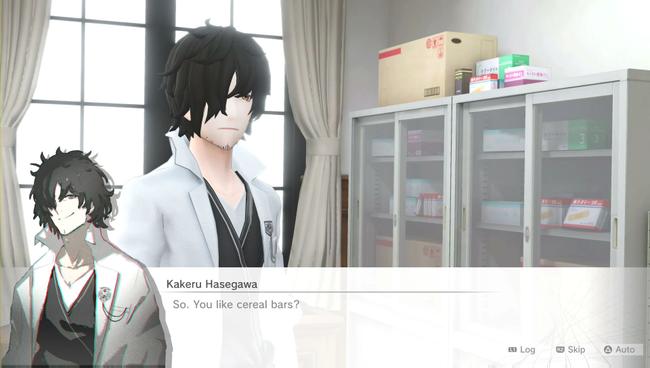
The supporting cast is slightly better, but only just. The mid-30s kinda lazy school doctor, Kakeru, serves as your mentor of sorts. The mysterious Sora/Yoru connection raised my eyebrow initially, though the payoff and outcome fell flat for me. You have your younger sister Chiyo, who has a bad case of “get away from brother-kun, you other girls” syndrome and fulfills the “we need someone lighthearted to cheer up the dreary tone of the story” role. Even the Monarks themselves, this game's namesakes - the very embodiments of the deadly sins and source of the Pactbearer's powers, are nothing more than a silent enemy that you have to fight a single time when dealing with their respective Pactbearers.
A couple of the enemy Pactbearers I actually felt the most for and found to be the most interesting characters in the game. In the interest of avoiding spoilers for folks, the inspiration and drive behind Pride’s decision was something different than you usually see, and I felt sympathy for Wrath’s situation. I even felt some emotion when tackling Greed’s Ideals. They may not have been amazing, but it was still nice to feel something playing this otherwise dull game.
Your 40+ hour visit to the world of Monark will be spent looking at emotionless character models, traversing mundane and similar-looking hallways sprinkled with the occasional slightly different hallways of the Shin Mikado Academy. The mysterious battles in the Otherworld aren’t much better, with the only real visual difference between the various Monark’s lairs being what color they are. The enemies you face during combat even have the same look, but are outfitted with a handful of different legs, masks, and chest pieces so get used to seeing a lot of spooky skeleton enemies.
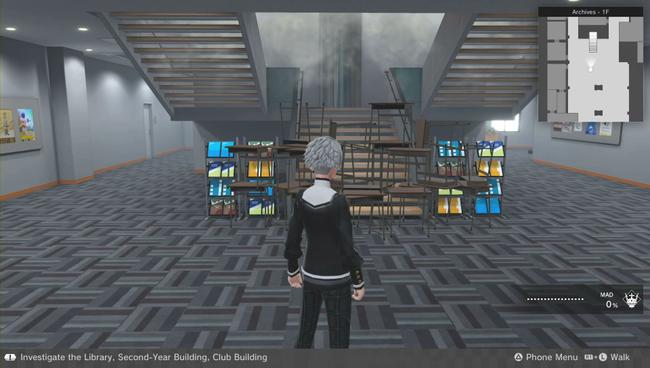
What is impressive though, in stark contrast to the rest of the game, are the absolutely gorgeous and expressive character portraits and Pactbearer scenes. The character portraits are expertly done and do a wonderful job of conveying extreme emotions, tension, and the character’s feelings -feelings that aren’t even in the slightest carried over to the emotionless and expressionless character models.
Seeing the hyper-emotive character portraits next to the model rocking a blank stare would instantly take me out of any immersion I found myself in and destroyed any emotional attachment I was having in that moment. If there is ever a Monark 2, they desperately need to work on keeping the 3D art closer to the drawn assets.
Monark offers a unique approach to your more traditional RPGs when it comes to how it is paced and the general flow of gameplay, which I have to applaud it for, even though it doesn’t pull it off as well as I would have liked. Breaking from the norm, there are actually very few required fights over the course of the game. Instead, much of your time will be spent playing investigator around the campus, with 90% of combat being done to level up to beat the mandatory fights.
In order to reach all of the required fights, you will have to first find a special little shrine of cellphones, typically found behind a locker or blocked by an obstinate student. To clear your path you will need to find information, find a key, solve a riddle, or find a locker combination all so you can progress. For the first half of the game, I found these situations to be overly simplistic, and after a certain point, the rest were obtuse and overly cryptic. With no “hint” or way to get help on the answers, they can be a real roadblock.

That being said, I enjoy the premise behind these. When I first started Monark, I thought the shift from your standard dungeon slog with enemies everywhere to the more search-and-discovery focus was a really neat idea. Early on, I was genuinely excited to see how these investigative moments would evolve as I progressed. I would love to see this concept of exploring and investigating expanded and improved on in other RPGs. But here in Monark, with its repetitive and wildly inconsistent difficulty, it comes off as more of a hassle that detracts more than it adds to the overall experience.
From the very beginning of the game through the “final dungeon” is paced up as follows: Find a way to get to X area, fight the battle found in said room, break the enemy’s Ideal, chit-chat with the party, repeat all that two more times, and then do all of that over and over and over again until you beat the game. Getting the “true ending” will see you repeating the last two chapters with a different character as your companion, with different encounters.
This flow isn’t made any better by the fact that you will never be able to have more than one of the main cast in your party at any given time, outside of when you decide to grind from the True Student Council room. For the first half of the game, you will be forced to take a brand new, level 1 character at each new building on campus you check out, and in the second half, you are forced to choose who you are taking with you. This means that the only party interactions you get are small conversations that happen between Ideal hunts or story scenes.
In their place, your forces will be supplemented with slightly less scary-looking skeletons that fight in the otherworld that you can customize, level up, and unlock skills for.
Why your main character can summon them is never really explained, but at least you can change their hair, build, and faces. That makes up for not having the actual other main cast characters, right?
The undisputed bright star of Monark for me was its tactical combat. There was enough complexity and mechanics to balance and plan around without becoming overbearing or a nuisance. It felt good when a plan came together and worked out.
Most of your fights will come out of a need to grind levels to tackle the relatively few required fights throughout Monark. These fights occur by using your phone near Vanitas and calling numbers. You will be given new numbers to call as you play the game. or you can take the chance and risk inputting a random number to spawn a random fight. There’s not really any detriment other than losing time by doing this as you can give up with no penalty, or retry should you fail. Should you find a fight you are ready for though, that is when the real fun starts!
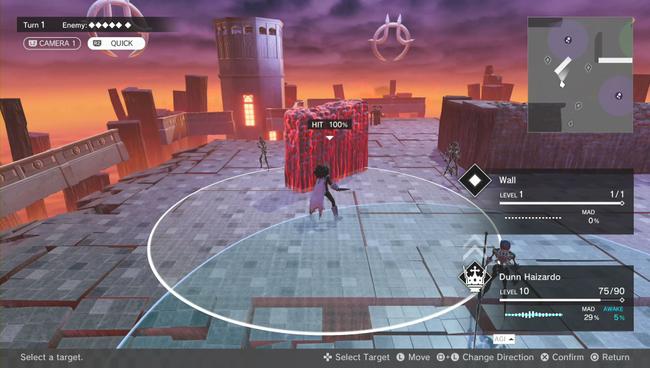
Dropped into an arena, you move your characters to any location within their circle of range. By placing them in strategically smart spots, you can take advantage of back attacks on enemies which do increase damage, chaining combo attacks with other party members or keeping your characters out of range of enemy counter-attacks. But, you need to keep in mind that your enemies can have access to all those additional benefits as well so you need to keep in mind how your characters will be facing at the end of their action and too.
Speaking of actions, you have access to either Arts (your physical-based attacks) or Authority (your magic), each of which uses a different resource. With only a small number of exceptions, Arts will drain your character’s health while Authority will increase a character’s Madness gauge. Keeping your health high is rather straightforward but your Madness is a different story.
Madness will passively increase as long as you are in a Mist covered zone at the Academy, and that value will carry over into combat. Should your Madness reach 100%, the character ( ally and enemy alike) will go crazy, boosting the damage they deal but also become uncontrollable and after a couple of turns, die to a mental breakdown causing a large area of effect attack that hits anyone caught in it. If left at that, then the simple remedy would simply to use items and skills to reduce the gauge. That can work, but learning to use and keep your Madness at the right level can give you the edge you need during tougher fights.
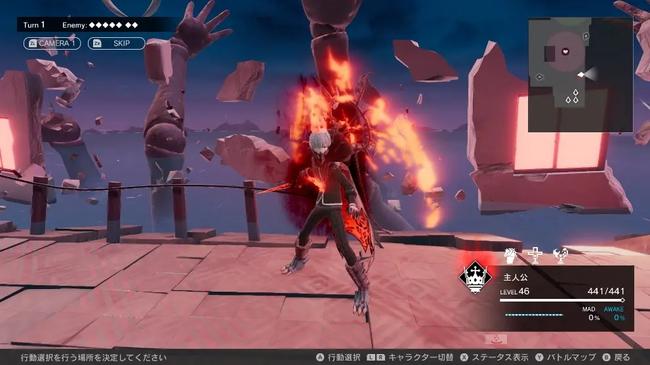
Some Authority skills have additional modifiers that are impacted by the higher the character's madness. This can make an attack that does only 100 damage at low madness levels, top 600+ when they are teetering on the edge of insanity.
If you don’t feel like having a character attack or can’t make it within range of a target, that doesn’t mean their turn has gone to waste. You are able to use the Defer command to gift their turn to another alley that has already gone, letting them move and attack again, at the expense of increasing that character's Madness, once again adding another layer and action to weigh your decision on. It really is great.
The only minor critique I have for the combat is that I wish I could automate the fights to a certain extent. Maybe not a full on auto-battle option, but if I could have my other party members set to certain AI behaviors, leaving me to only have direct control of the main character should I desire. It would be nice.
Monark is a shockingly repetitive romp through mundane corridors featuring a cast of uninspired stereotypes, with combat and artwork as its saving graces. There are glimpses of interesting design decisions here, such as a lesser focus on combat and more on discovery that I would love to see get more attention going forward, even if it isn’t necessarily from this developer. On the flip side, the unsettling subject matter that is approached in Monark is not done in such a way as to pay respect for those that may be triggered by such situations and circumstances and instead use them for shallow potential shock value and plot devices.
When the credits rolled for the first time, there were aspects of Monark’s world that eluded and I was in the dark about as much as when I started the game. Why do the Pactbearer’s powers make mist? What allows some people to create Imagigears to defend themselves in the otherworld and others can’t? Or why do phones take you into another world with daemons? I honestly couldn’t tell you, and I’m not sure at this point I really care.
I wouldn’t be against seeing a Monark 2 one day, I’d love to get more of this combat, and if they can get the character models to look more like the drawings - even better. If we do get a sequel, I will definitely be approaching it with far less excitement than I went into this first Monark game with. Get yourself the free demo and when it’s over, ask yourself if you would have fun doing that same stuff over and over and over. If you think you would, then maybe you will have a better time with Monark than I did.
